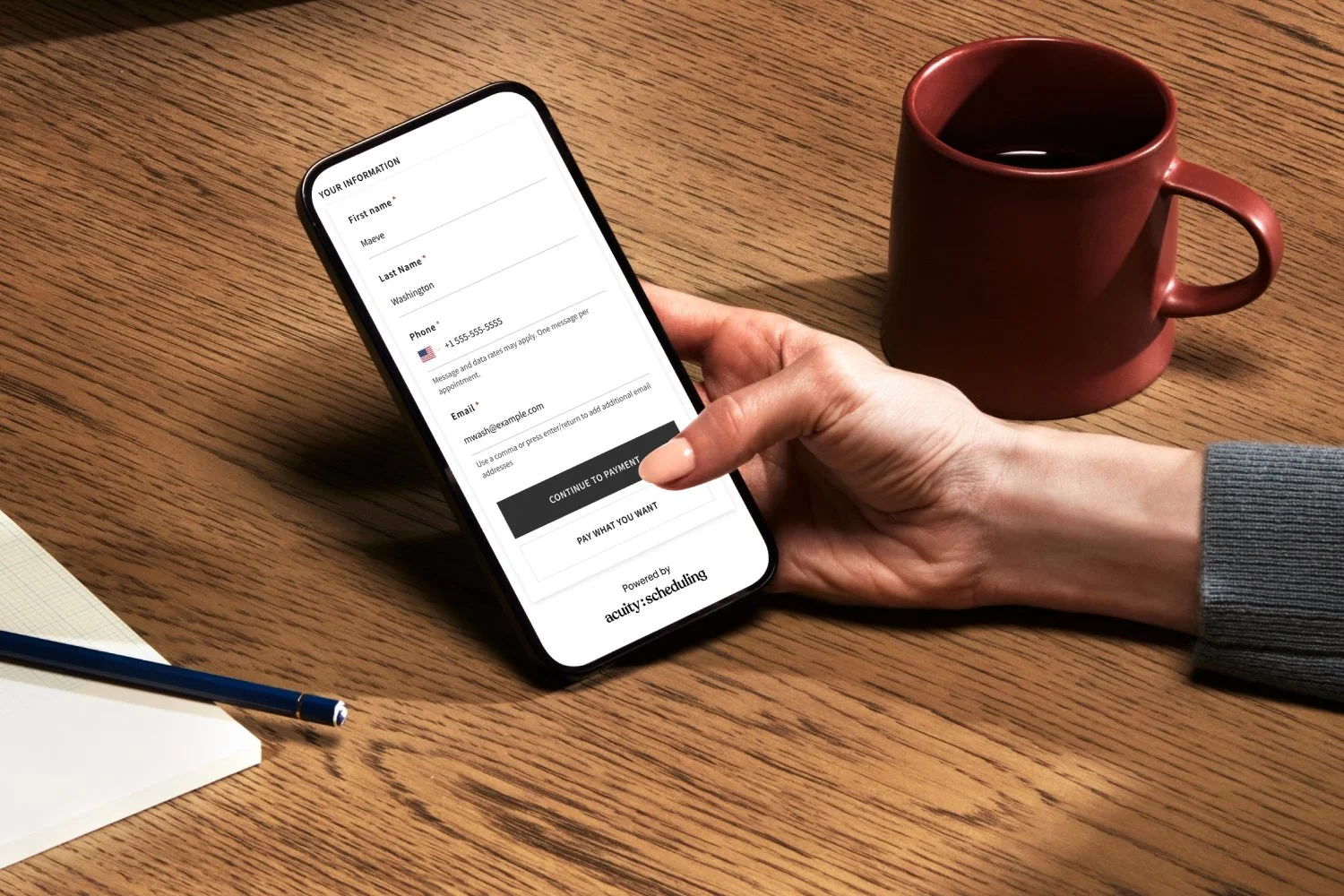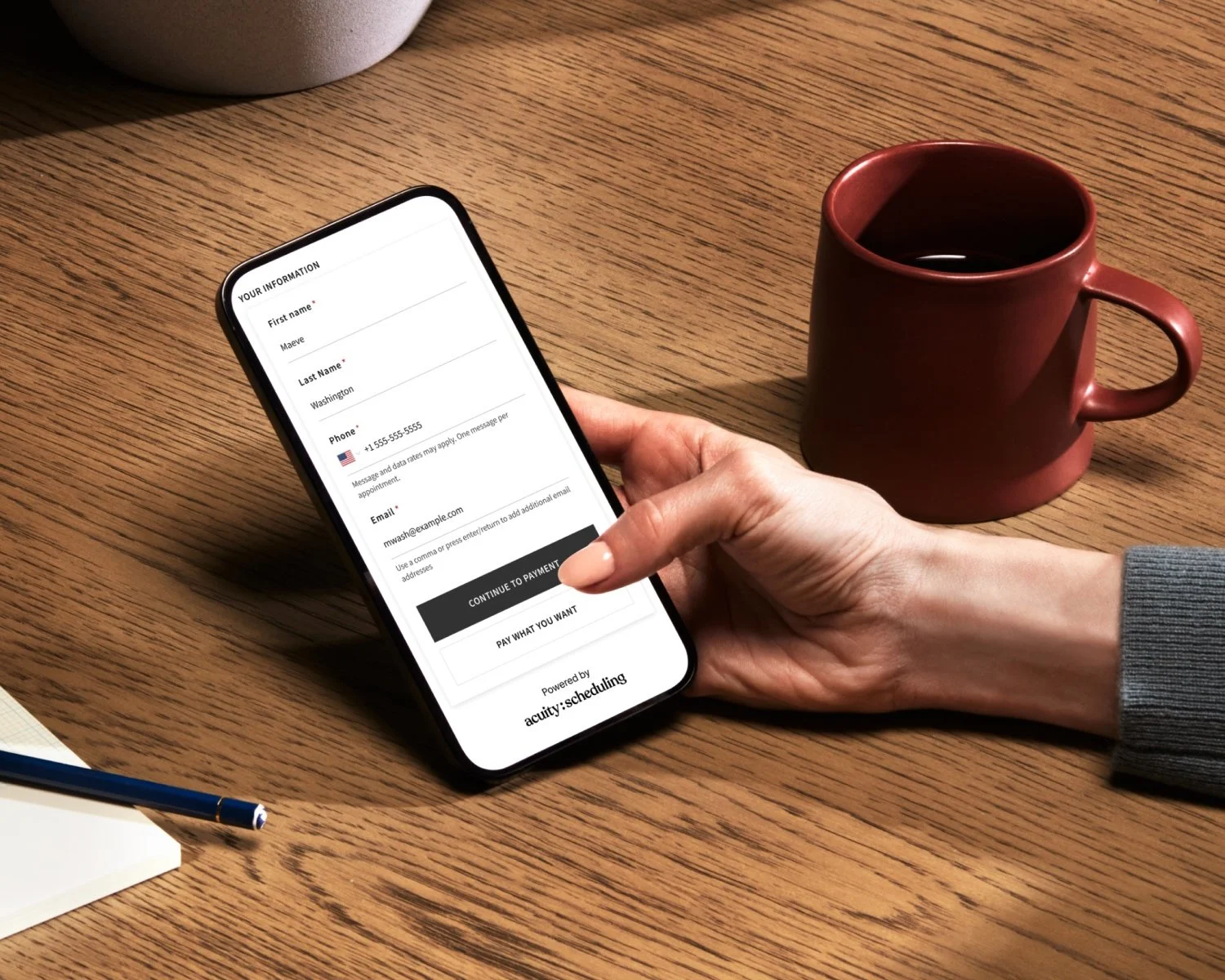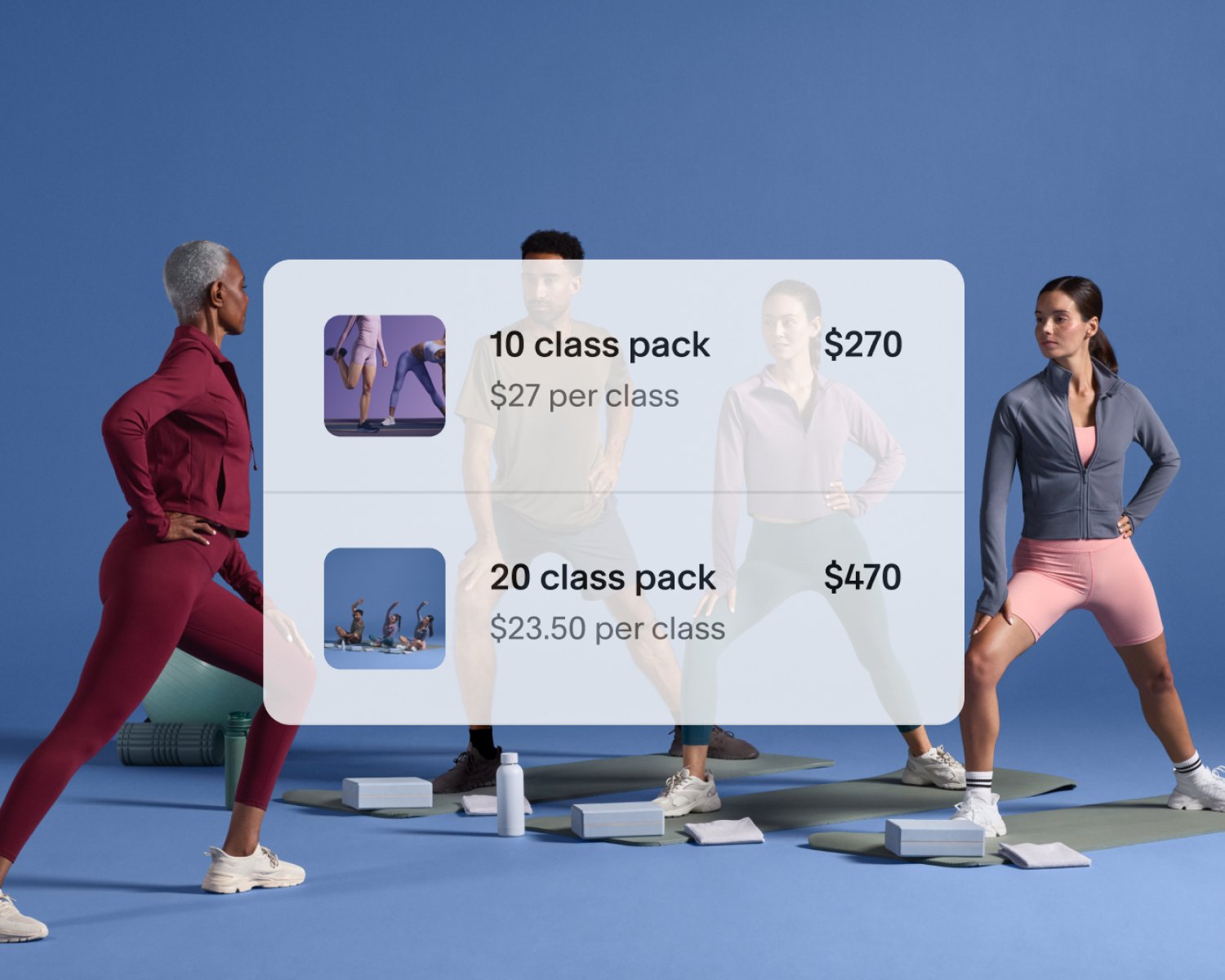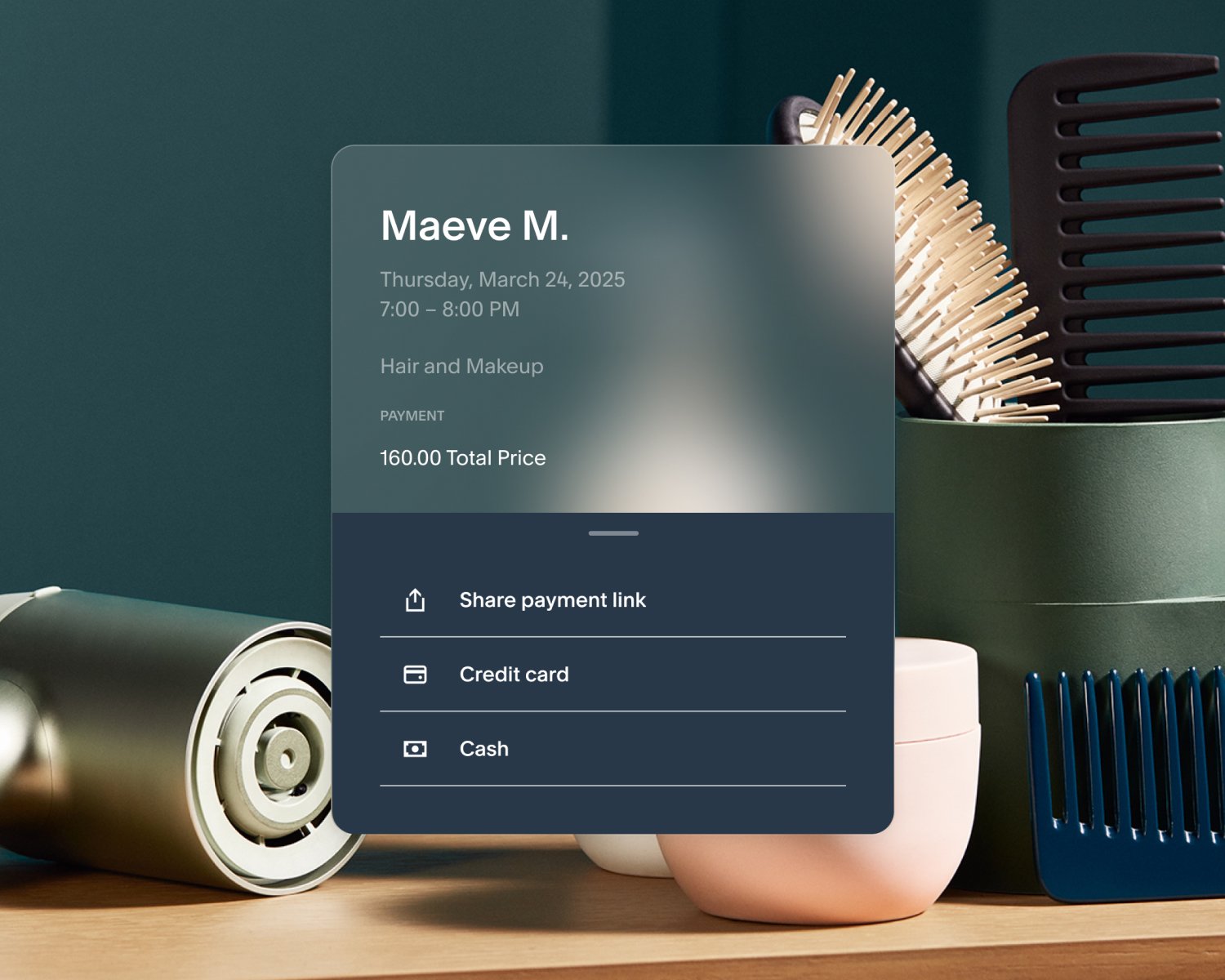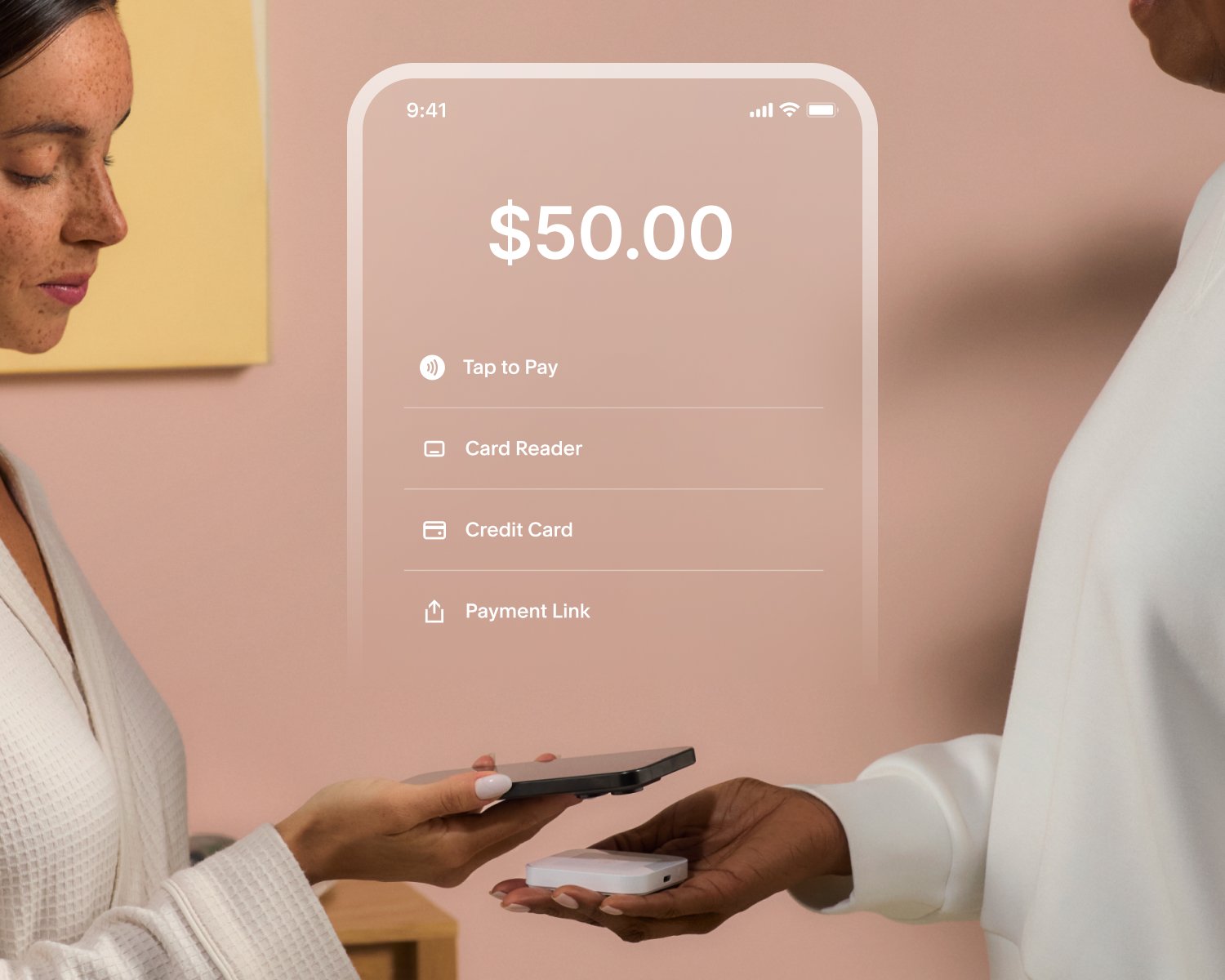Precios para pagar a tu gusto: cómo facilitar las reservas y las donaciones
Pay-what-you-want (PWYW) pricing is exactly what it sounds like: instead of you setting the full price for your services, your clients get to choose what they pay. Sometimes they’ll pay the minimum amount you set, and sometimes they’ll surprise you by paying more.
It’s a bold model, but when it’s done well, it can open doors for nonprofits, creators, and service businesses that want to make their work more accessible, build trust, or support an important cause. And with Acuity Scheduling, you can offer PWYW for any type of appointment or service.
In this guide, we’ll share pay-what-you-want pricing examples, benefits, and best practices so you can decide if it’s the right move for your business.
How pay-what-you-want pricing works
Pay-what-you-want pricing—sometimes framed as “pay what you can” or “pay what you wish”—puts the decision in your client’s hands. You set a sustainable minimum (even if that minimum is free), then let them decide whether they’ll pay just that or a higher amount.
The pricing model isn’t new, but digital tools have made it easier than ever for small businesses and nonprofits to try it out. With Acuity Scheduling, PWYW can be applied directly to appointments, classes, or events that clients book online, giving them an easy way to support your business in the way that makes sense for them.
When to use pay-what-you-want pricing
Pay-what-you-want pricing isn’t for every business, every service, or every season. But in the right context, it can be powerful. Here are a few moments where PWYW shines:
Launching a new service: Not sure what to charge for a new coaching session or workshop? PWYW lets you test the waters while collecting valuable data about what people are willing to pay.
Driving bookings for a specific service: Maybe you’ve got a class that needs a boost, or you want to fill slower time slots on your calendar. PWYW can generate buzz and draw in new clients.
Fundraising and donations: As FundsforNGOs notes, technology has transformed how nonprofits connect with supporters—streamlining donations, enhancing engagement, and opening global audiences. PWYW taps into that same principle. By using software like Acuity to offer pay-what-you-want pricing online, you can create an easy entry-point for donors.
Increasing accessibility: PWYW can open doors to people who may not otherwise afford your services. For example, barber-stylist Carlincuts offers a set number of pay-what-you-can haircuts each month to support their community.
In each of these cases, pay-what-you-want pricing lowers barriers, builds goodwill, and could even surprise you with higher-than-expected contributions.
When not to use pay-what-you-want pricing
Because pay-what-you-want pricing asks you to hand over some control, it isn’t always the right fit, especially for small businesses and solopreneurs who have to watch margins closely.
A few red flags:
Core services that pay your bills: If your main income comes from one service, PWYW could put your stability at risk. Use it selectively for experiments or special occasions.
High-overhead services: Anything with significant material or labor costs should probably stick to standard pricing—you don’t want to lose money on every booking.
Unclear value proposition: If clients don’t understand what your service is worth, they’re less likely to pay generously. PWYW requires you to communicate your value clearly.
When consistency matters more than flexibility: Some businesses thrive on predictability. If you need steady, reliable revenue, PWYW may feel more stressful than rewarding.
Overall, pay-what-you-want pricing works best when it’s an intentional choice, not a default setting.
Pay-what-you-want pricing examples
PWYW experiences can look very different depending on the type of business or cause. Here are a few real-world ways that different industries can use the pricing model:
Nonprofits: Donation-based workshops, community counseling sessions, or fundraising events. Clients give what they can, and the collective generosity adds up.
Wellness and fitness: A yoga studio might run a PWYW community class once a month, letting participants pay anywhere from $5 to $50. The model makes the practice more inclusive while encouraging regulars to contribute more.
Creative services: An artist might host a PWYW workshop, or a photographer might offer pay-what-you-can headshots for recent grads or job hunters.
Coaching and education: Trial coaching sessions or group tutoring where clients choose the price. It’s a low-barrier way to build trust and turn curious newcomers into long-term clients.
Seasonal use cases: Special campaigns like Giving Tuesday or year-end appeals.
Benefits of pay-what-you-want pricing
When framed thoughtfully, pay-what-you-want pricing has the potential to benefit businesses in meaningful ways. The pricing model can:
Expand accessibility: Make your services available to a wider audience while supporting your community.
Build goodwill and loyalty: Clients might surprise providers by paying above the minimum, especially when they feel appreciated.
Gather market insight: PWYW gives you a clearer sense of what people are truly willing to pay, which can shape future pricing decisions.
Boost engagement: Lowering the financial barrier can bring in new clients who may later book at full price.
Challenges to consider (and how to address them)
PWYW isn’t without its risks. Here are a few common challenges when it comes to giving clients control over how much they pay, and ways to avoid the bumps:
Risk of underpayment → Set a minimum price that covers your costs so you’re never operating at a loss.
Unclear communication → Frame the value. Be upfront with language like “pay what you can, support if you’re able” to frame the experience and highlight the impact of higher contributions.
Need for context → Pair PWYW with storytelling. Share how contributions fuel your mission, fund new projects, or expand community access. Clients are more likely to pay generously when they understand what they’re supporting.
Risk of stagnation → Experiment and iterate. Test different minimums, try seasonal PWYW events to build urgency, tweak your messaging, and adapt based on what resonates.
Promotion gaps → Get the word out. Use email, social, or even a short video to explain how PWYW works and why it matters.
Handled this way, pay-what-you-want pricing becomes less of a gamble and more of a smart strategy.
How to set up pay-what-you-want pricing in Acuity Scheduling
With Acuity, offering clients pay-what-you-want pricing is easy to do. Just follow these steps:
Connect Acuity to either Stripe or Square for payment processing. (PWYW pricing isn’t available if your Acuity account is connected to PayPal.)
In Acuity, click Payment Settings.
To enable PWYW for all appointment types, switch the Use the same method for all appointment types toggle On and select Collect deposits or full payment.
To enable PWYW for a specific appointment type, switch the Use the same method for all appointment types toggle Off, click an appointment type, and select Collect deposits or full payment.
Use the Type of payment drop-down menu to choose Full payment + allow clients to pay extra.
Click Save.
If no minimum price is set, the appointment will be free (clients can pay $0 or more). To set a minimum:
In Acuity, click Appointment Types.
Click Edit for an appointment type.
Change the value in the Min Price field to your minimum price.
Click Update Appointment Type.
From there, Acuity does the hard work of collecting payments, sending confirmations, and sparing you from chasing down IOUs.
Flexibile pricing that pays off
Pay-what-you-want pricing can feel unconventional, but it’s an opportunity to reach more people, test new offers, and grow donations or revenue. Want to see how it works for your nonprofit, class, or service?
Acuity Scheduling combines online booking with payments, you don’t have to worry about messy logistics to try PWYW at your business. Start your free trial and set up flexible payments for your appointments today.
